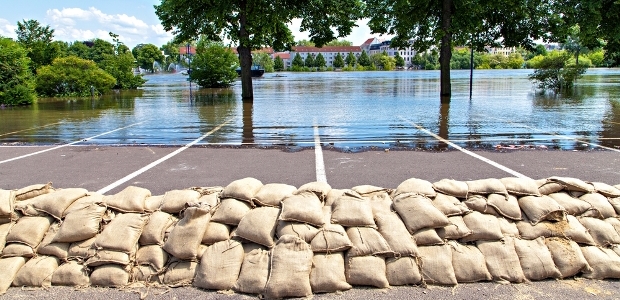
Europe’s Transport Network Vulnerable to Climate Change
Disasters such as floods and storms have led to several high-profile disruptions of Europe's transport network over the last few years. As the climate changes, the transport system urgently needs to adapt, according to a new assessment.
Transport is vital to the smooth running of the economy. When movement of people, goods or services is hindered, the indirect costs to the economy can be many times higher than the direct cost of damaged transport infrastructure. Despite these risks, adapting the transport system to climate change has received relatively little attention from policymakers to date, according to 'Adaptation of transport to climate change in Europe', a new report from the European Environment Agency (EEA).
Transport and climate risks include:
- Flooding can cause long-term disruption, as was the case in summer 2013, when flooding damaged the main railway bridge across the River Elbe in Germany, used by all trains to and from Berlin via Hannover, including high-speed services from Berlin to Frankfurt, Cologne and Dusseldorf.
- Infrastructure is also vulnerable to storms. This was demonstrated in February 2014, when the coastal section of the south–west main line railway was destroyed in Dawlish, United Kingdom. The railway in the south-west of the UK was cut off from the rest of the network for two months.
- Rising temperatures and extended heatwaves can increase the problems of rail buckling, pavement deterioration and passenger discomfort.
- Sea-level rise can threaten harbours and other transport infrastructure and services at the coast.
- Climate change may also have indirect effects on transport. For example, it may lead to changes in tourist destinations or agricultural production, which can have an impact on transport demand.
There has been limited progress in adapting Europe's transport system, although it is still not widespread. The report highlights several examples of early action, while 10 European countries refer to transport or transport infrastructure in some detail in their national adaptation strategies.
Adapting transport infrastructure may be difficult because transport networks are highly complex, involving many different groups, from vehicle manufacturers to infrastructure managers to passengers. Another hurdle is the high cost of adapting hard transport infrastructure.
One of the most cost-effective solutions is to consider adaptation measures when infrastructure is built or renewed. Moreover, those adapting can prevent 'locking-in' to unsustainable transport systems by taking a longer-term, systemic perspective, the EEA report says.
At the European level, there are funds to help the transport system adapt to climate change. Action has also started on a project to revise European standards for infrastructure in light of climate change projections.